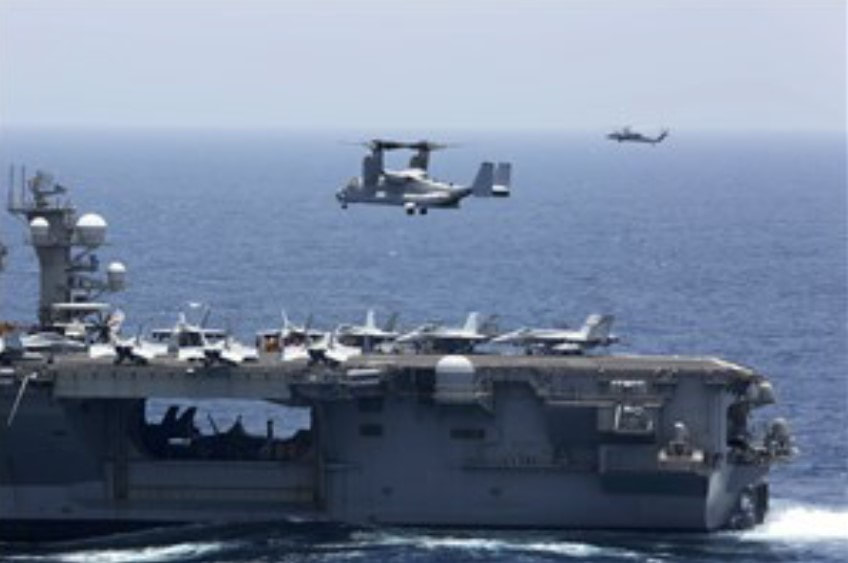|
Since 1963, the Navy has used the C-2A Greyhound, known as the carrier onboard delivery (COD), for transportation of personnel and cargo from shore to at-sea aircraft carriers. But the aircraft’s inactive production line and other limitations had the Navy looking for a more versatile option.
That replacement didn’t come in the form of an advanced, new platform. It’s been hiding in plain sight in the form of the U.S. Marine Corps MV-22 Osprey. The Osprey brings flexibility to a strike group, said Navy Capt. Bill Reed, the Commander, Carrier Air Wing 7, currently embarked aboard the Nimitz-class aircraft carrier USS Abraham Lincoln (CVN 72). According to an article published on Naval Aviation News, the Navy’s version of the MV-22, the CMV-22B, makes loading and unloading cargo at night easier, has longer-range radio capability, increased fuel capacity, vertical takeoff and landing capability, and can carry cargo of 6,000lbs for more than 1,100 nautical miles. “It gives us that agility and flexibility the Navy looks for going forward into the future,” said Reed. The transition could be as simple as painting “NAVY” on the side of an already existing platform, except for one detail, the Navy currently does not have any Osprey Squadrons.. Although not as easy as a paint job, the Navy has started training its pilots to fly the new aircraft. Naval aviators have been receiving qualifications at Marine Corps Air Station New River in Jacksonville, North Carolina. Once the pilots complete the course of instruction there, they are embedded with a Marine air combat element deployed on a Navy amphibious ship on deployment and fly MV-22s in real-world operations. Lt. Thomas Hendricks, a Naval aviator attached to Marine Medium Tiltrotor Squadron 264, 22nd Marine Expeditionary Unit, embarked aboard the Wasp-class amphibious assault ship USS Kearsarge (LHD 3), is one of the first Sailors to fly the Marine aircraft. Hendricks recently flew an MV-22 from Kearsarge to Lincoln during joint operations in the Arabian Sea. “There are exciting times and there are frustrating times being the first at anything,” said Hendricks, who flew 1,300 miles in one day piloting the Osprey. “But I think ultimately this will be good for the Navy.” The Navy plans to transition from using the C-2A to the CMV-22B starting in 2020, and expects to have more than 20 fully integrated into the fleet by 2026. Once the new Osprey has started its service in the Navy, the Greyhound will be transitioned out. Kearsarge is the flagship for the Kearsarge Amphibious Ready Group (ARG). Lincoln is the flagship for Lincoln Carrier Strike Group (CSG). The Kearsarge ARG and Lincoln CSG are deployed to the U.S. 5th Fleet area of operations in support of naval operations to ensure maritime stability and security in the Central Region, connecting the Mediterranean and the Pacific through the western Indian Ocean and three strategic choke points. Source: US Navy Date: May 22, 2019
0 Comments
The carriers Liaoning and Type 001A rely on airborne early warning helicopters and an integrated radar system to detect enemies. But these systems with their weaker warning capability risk exposing the carrier's position, the report said. Phased radar carried by an airborne early warning helicopter is limited in size. The early warning distance, time and accuracy is thus limited. An aircraft like the KJ-600 has a larger radar, flies higher than a helicopter and sees farther and more clearly.
|
BlogCategories |
VAWVRC Foundation is a registered 501(c)3 non-profit organization.

